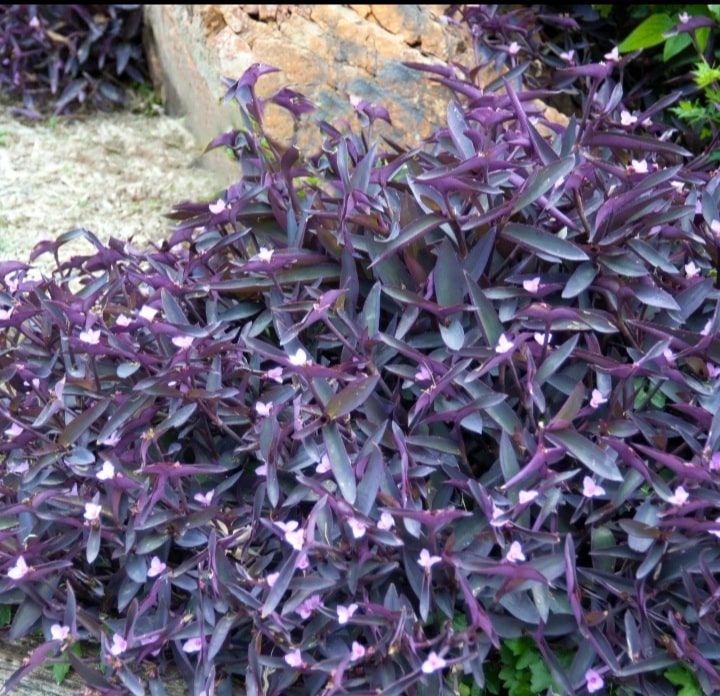PURPLE heart – Tradescantia pallida – is aptly named because its iconic purple stems grow beautiful small flower clusters, ranging from violet to pink, along with vibrant foliage.
Both the stems and upper surfaces of the leaves appear to be deep Royal purple, but may also contain lighter shades of turquoise grey that become darker as the foliage grows older.
In warm climates it is grown as an evergreen perennial and is ideal for a dense ground cover plant, adding a pop of purple colour to your garden.
It can add a lush and tropical groundcover texture to any landscape. Downward trailing stems mean it will always stand out, even when planted as part of border fronts, wall plantings and rock gardens.
Planting in full sun helps ensure they grow vibrant purple stems. It can also grow in partial shade, but its stem is more likely to appear green, than purple.
Introduce the plants to brighter conditions, over time, as too much direct sunlight all at once can burn foliage.
They grow best in lightweight moist soil, with good drainage a must.
Purple heart is considered to be drought-tolerant, and will not require a great deal of watering. However, for best growth do not let the plant sit dry for long periods.
Water when the top layer of soil feels dry to the touch, watering during its blooming season. If kept too dry you will notice the leaves are limp.
They don’t generally require fertiliser, although it can be used. Just dilute the fertiliser solution to half of its regular strength.
As the plant grows long stems and is fast growing, it can become leggy and spindly very quickly. To keep compact, prune during the warmer months, after the blooming period is over, taking off the top half of the stems.
Wear gloves as the sap in the stems can cause contact dermatitis and burns and is also toxic to pets.
Propagation is easy by taking stem cuttings and ensure that too much water isn’t retained by the soil, as this can lead to root rot.






